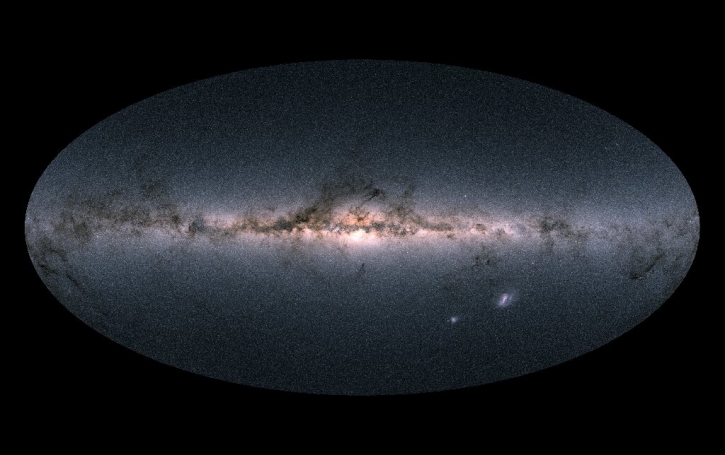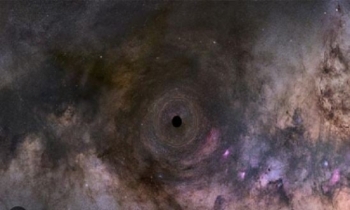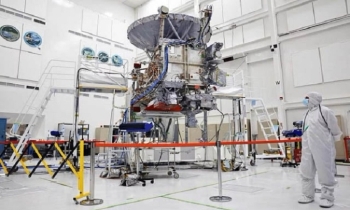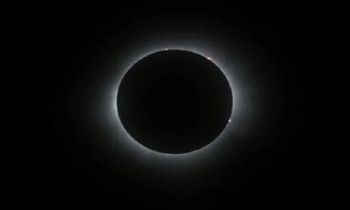Milky Way’s secrets revealed by massive space probe map
BI Desk || BusinessInsider

Photo: Collected
The Gaia spacecraft on Monday unveiled its latest discoveries in its quest to map the Milky Way in unprecedented detail, examine nearly two million stars and reveal mysterious “starquakes” that sweep across the fiery giants like massive tsunamis.
The mission’s third dataset, which: will come true to eagerly awaiting astronomers around the world at 1000 GMT (June 13), “our understanding of the galaxy is revolutionizing,” the European Space Agency (ESA) said.
“It’s the Swiss army knife of astrophysics – there isn’t a single astronomer who doesn’t use their data directly or indirectly,” said Francois Mignard, a member of the Gaia team.
Some of the map’s new insights are close to home, such as a catalog of more than 156,000 asteroids in our solar system “whose orbits the instrument has calculated with incomparable precision,” Mignard said, reports The Straits Times.
But Gaia also looks beyond the Milky Way and sees 2.9 million other galaxies and 1.9 million quasars — the stunningly bright hearts of galaxies powered by supermassive black holes.
The Gaia spacecraft is in strategically positioned orbit 1.5 million kilometers (937,000 miles) from Earth, where it has been monitoring the sky since it was launched by the ESA in 2013.
‘Beautiful melting pot of stars’
“Gaia scans the sky and picks up everything it sees,” said astronomer Misha Haywood of the Paris Observatory.
But it can still detect only about one percent of the stars in the Milky Way, which is about 100,000 light-years across.
The probe is equipped with two telescopes and a billion-pixel camera, which captures images sharp enough to measure the diameter of a human hair at a distance of 1,000 kilometers (620 miles).
It also has a range of other instruments that allow it to not only map the stars, but also measure their movements, chemical composition and ages.
“It provides the first global observation of the positions of anything moving in the sky,” Haywood said, adding that before Gaia, “we had a really limited view of the galaxy.”
It also reveals the vast array of differences between stars.
“Our galaxy is a beautiful melting pot of stars,” said Gaia member Alejandra Recio-Blanco.
“This diversity is extremely important because it tells us the story of the formation of our galaxy,” he said.
“It also clearly shows that our sun, and we, all belong to an ever-changing system, formed thanks to the assembly of stars and gas of different origins.”
Surprise starquakes
The observation of “starquakes,” huge tremors that change the shape of the distant stars, was “one of the most surprising discoveries to come from the new data,” the ESA said.
Gaia wasn’t built to detect starquakes, but still discovered the strange phenomenon on thousands of stars, including some that shouldn’t have one — at least according to our current understanding of the universe.
“Gaia opens a gold mine for ‘asteroseismology’ of massive stars,” said Gaia member Conny Aerts.
In addition to the new data, about 50 scientific papers were published, with many more expected in the coming years. Gaia’s observations have fueled thousands of studies since the first dataset was released in 2016.
With the second data set in 2018, astronomers were able to show that the Milky Way merged with another galaxy about 10 billion years ago in a violent collision.
The deluge of raw data is being combed through by a team of 450 European scientists and software engineers using six supercomputers and “human-driven algorithms” as part of the Data Processing and Analysis Consortium, Mignard said.
“Without this processing group, there is no mission,” he added, as Gaia produces 700 million star positions and 150 million photometric measurements every day.
It took the team five years to provide the latest data, observed from 2014 to 2017.
“We can’t wait for the astronomy community to dive into our new data to learn even more about our galaxy and its environment than we could have imagined,” said ESA’s Gaia project scientist Timo Prusti.
The final dataset will be released in 2030, after Gaia completes its mission to survey the skies in 2025.








































